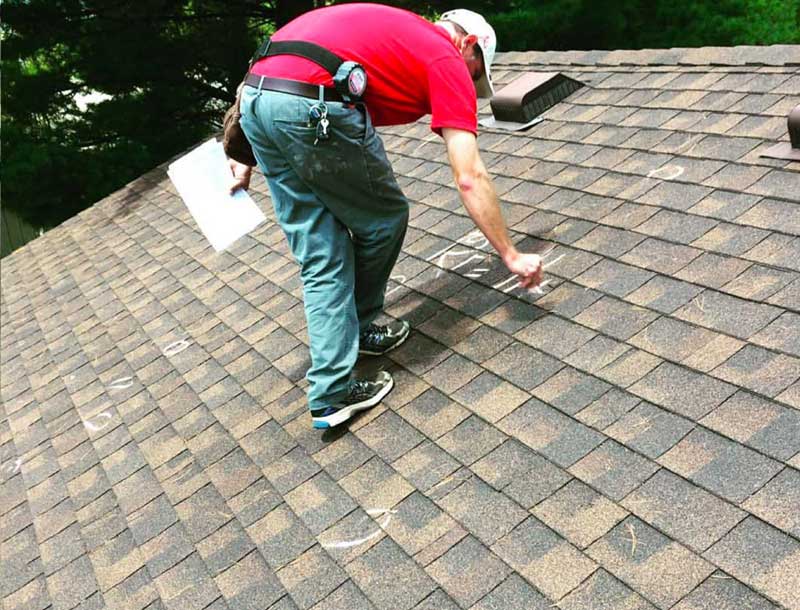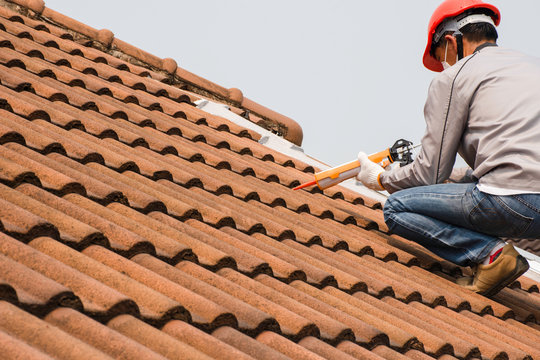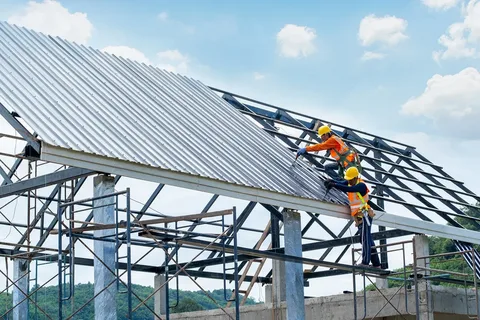Introduction
A roof leak can cause severe damage to your home if not addressed immediately. Water can seep into walls, ceilings, and insulation, resulting in mold growth, structural weakening, and even electrical hazards. 💧🏚️
In this article, we’ll guide you through the process of detecting roof leaks early, understanding the most common causes, and offering practical solutions for repair. By staying proactive, you can protect your home and your wallet.
1. Common Causes of Roof Leaks 🌧️
Before we jump into how to fix roof leaks, it’s important to understand the common causes that can lead to water infiltrating your home.
Damaged or Missing Shingles 🏚️
Shingles are the first line of defense against rain, snow, and ice. When shingles crack, curl, or go missing, they create an opening for water to seep through. Even minor damage can escalate if not caught early, leading to bigger problems like water stains or mold.
- Tip: Always check your roof after a storm or heavy rain. If you notice any shingles that look out of place, replace them immediately.
Clogged Gutters 🧹
Your gutters are responsible for diverting water away from the roof and foundation of your home. If they become clogged with leaves or debris, water can pool, create a dam, and eventually find its way under the roof’s edge, causing leaks.
- Tip: Clean your gutters regularly and ensure water is flowing freely. Clogged gutters are often a major cause of roof leaks.
Faulty Flashing 🔧
Flashing is the metal material used to seal the joints where the roof meets structures like chimneys, vents, or skylights. If flashing becomes damaged or improperly installed, it can allow water to leak through these vulnerable areas.
- Tip: Inspect flashing for cracks, rust, or damage. Repair or replace faulty flashing to prevent leaks.
Ice Dams ❄️
During the winter months, ice dams can form on your roof, especially if the attic is inadequately ventilated. The snow melts from the heat in the attic and refreezes at the edges, creating an ice dam. These dams trap water behind them, forcing it under shingles and causing leaks.
- Tip: Insulate and ventilate your attic to prevent snow from melting and refreezing. Installing heated cables along the roofline can also help prevent ice dam formation.
2. How to Detect Roof Leaks 🔍
Detecting roof leaks early is crucial to preventing further damage to your home. While some signs are obvious, others might be more subtle. Here’s how to identify roof leaks:
Visible Stains on the Ceiling 🏠
Water stains on your ceiling or walls are often the first visible sign of a leak. These stains can appear as yellow or brown patches and indicate water seeping through your roof.
- Tip: If you notice stains, check the attic above or the roof area directly above the stain. This can help you identify the source of the leak.
Musty Odor 🏚️
A musty or damp smell in your home can be a sign of hidden leaks. The moisture from leaks can lead to mold growth, especially in areas with poor ventilation like attics or crawl spaces.
- Tip: If you smell mold or dampness, inspect areas where leaks are common, such as around chimneys, vents, or skylights.
Higher Water Bills 💧
An increase in water usage or a sudden spike in your water bill could indicate that your roof is leaking into the walls or attic, causing water to be wasted.
- Tip: If your water bill has risen unexpectedly, check your roof and attic for signs of moisture and contact a professional to assess the damage.
3. How to Repair Roof Leaks 🛠️
Once you’ve identified the leak, it’s essential to take quick action to repair it. Here’s what you need to do:
Shingle Replacement 🔨
If you find that your shingles are cracked, missing, or damaged, you’ll need to replace them. This is a relatively simple fix for a roofing professional but can prevent significant water damage if addressed promptly.
- Tip: Always use the same type of shingles for replacement to maintain your roof’s integrity and aesthetics.
Sealant Application 🧰
For small cracks around flashing, vents, or other roof joints, a quality roof sealant can prevent water from infiltrating your home. Make sure to use a sealant designed for outdoor and roofing use.
- Tip: Use a sealant that is weather-resistant and designed to last in the extreme temperatures of New York.
Gutter Cleaning 🧹
If your leak is caused by clogged gutters, cleaning them out is a simple fix. Make sure that water flows freely through the gutters and downspouts to avoid further leaks.
- Tip: Perform gutter cleaning twice a year—once in spring and once in autumn—to prevent buildup and ice dams.
Professional Help 👷♂️
If the leak is extensive or you’re unsure about the cause, it’s best to hire a professional roofer. They can identify hidden leaks, such as those caused by poor flashing or underlying structural issues, and provide an efficient repair solution.
- Tip: Hiring a professional can save you time and money in the long run, especially if the leak has caused extensive damage.
4. Preventing Future Roof Leaks 🛡️
Preventing leaks is just as important as fixing them. Here are a few tips to keep your roof in top shape:
Regular Inspections 🔍
Conduct regular roof inspections at least twice a year—once in the spring and once in the fall. This allows you to catch any potential issues before they become major problems.
Proper Insulation and Ventilation 🌬️
Ensure your attic is properly insulated and ventilated to prevent heat from escaping and causing snow to melt on your roof.
Conclusion
Roof leaks can be a serious problem, but with early detection and quick repairs, you can avoid major damage to your home. 🏡 Stay vigilant, maintain your roof, and prevent leaks from becoming a larger issue. If you’re unsure about any part of the process, don’t hesitate to contact a professional for help!


